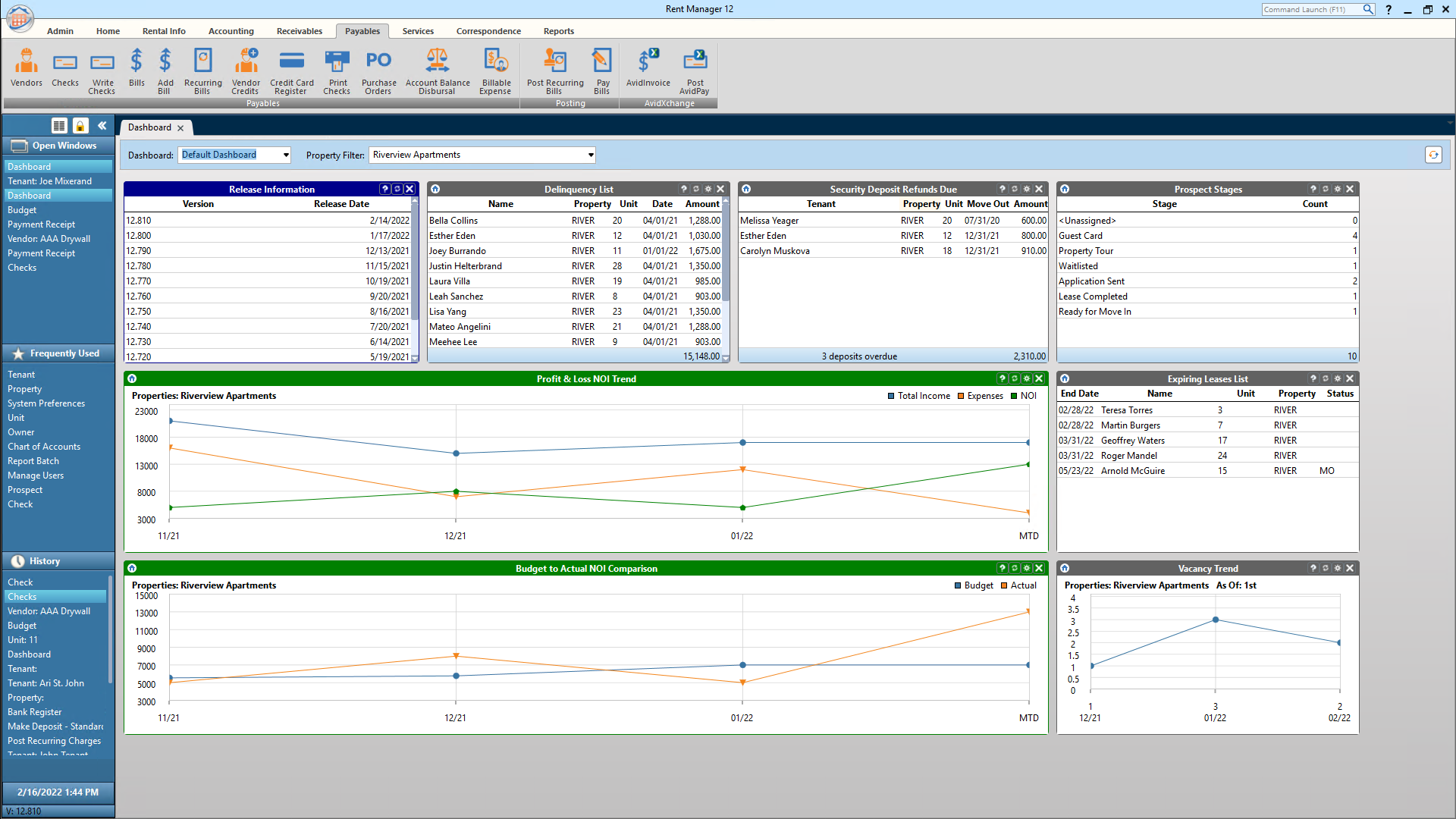
Real estate management is the acquisition, maintenance and operation of real property. This includes commercial and residential realty properties. It also includes employees, equipment, and physical capital assets.
Property management can be complex. A property manager must be familiar with the local rental market and understand the needs of tenants. They may also have responsibilities for marketing, maintenance, or conflict resolution. They must also be familiar with federal statutes so they can apply them to their businesses.
Property management is a service provided by professional companies. Many states require property manager licenses. They can be licensed as a realtor or salesperson. These professionals include developers, appraisers and bankers.
A typical property management service involves cost budgeting as well as tenant placement, marketing, advertising, and promotion. The company can also provide financials, advice on tax deductions, and recommend strategies for long-term planning. These companies can often provide financials on a quarterly, yearly or annual basis.

A property management company that is reliable and efficient can save you time and money. These companies can handle multiple properties at once, and they can also be a source of help for tenants. They can also respond quickly to tenant questions. Many also offer repairs.
If you hire a real estate agency to manage your property, you will be required to pay a fee. This fee is usually between 8% and 10% of the rental price. The fee doesn't have to be paid until the contract has been signed. Some companies also charge a set-up fee and a fee for letting tenancy.
Property managers are different from traditional landlords in that they will manage repairs and maintenance. Moreover, they can recommend marketing programs. This can result in increased profits year round.
Tenant maintenance calls are a major driver for property managers. Landlords who have their own rental properties often have little to no time to deal with tenant issues, so it's important to hire a qualified property manager.
Property managers have extensive industry knowledge and are capable of managing multiple properties at one time. They can also keep detailed financial reports. They can also give owners reports online.

Property management is an investment. It's crucial to choose a company that will give you the best value for your money. Choosing a great property management firm can ensure a smoother and less stressful experience for you and your tenants.
Property managers are also knowledgeable about laws, regulations, and other rules that govern rental properties. They must be able evict tenants without notice if the tenant is not paying and to collect late payments. Contractor's liability insurance must be purchased. Finally, they must be able to abide by the terms of the lease.
If you don't have a property manager, it can be an option. But it can be very time-consuming. Hiring a property management firm can help you if your tenants are not paying their rent on time, have issues with your landlord, or just to alleviate some of the stress.
FAQ
Which is easier: contracting or being a handyman?
Because you only need tools and yourself, being a handyman is more time-consuming than contracting. While contractors often rely on subcontractors, handymen must be able and willing to manage their own work schedules.
What's the difference between a handyman or a carpenter, you ask?
Handyman services can be provided for a wide range of tasks, such as plumbing, electrical, carpentry, cabinet building, flooring, tiling and kitchen remodeling. Carpenters specialize in woodworking. They can build cabinets and walls, doors, windows or stairs.
What does the average handyman charge an hour?
An hourly rate for a handyman is between $50 and $75. Many have been doing this job for many years. Their average work week is about 10 hours. They do not need to be advertised; they are well-known in the area.
They tend to specialize and develop customer relationships over time.
Their key difference from other contractors is their quickness, reliability, and affordability.
Most people know at most 2-3 of these men and are able to trust them enough to call when they have a problem.
Some people have their own business.
Do you have the skills to fix my leaking faucets?
While a handyman is capable of handling minor repairs, they will not be qualified to do major projects like wiring up a house or installing custom-made cabinets. However, a handyman is capable of doing minor home improvement projects.
How often should I use a handyman for my job?
It depends on your project. One handyman might be enough to do a basic job like changing a bulb or fixing a leak. If there are many remodeling tasks involved, however, you might need several handymen.
Where are handymen from?
There are thousands and thousands of handymen throughout the U.S. But almost none of them started their career as contractors. Most began their career as a tradesman and were taught how to do certain things by apprenticeships. Because of this, many have great skills and vast knowledge that can be a huge asset to any company.
Do you have any suggestions from a handyman on how to improve your home?
Absolutely! In fact, a handyman is trained in all areas of home repair and maintenance. He or she is trained in what repairs are needed and what does not. Do not hesitate to seek advice whenever you are in need.
Statistics
- Our handyman services for seniors are provided by professional senior helpers who have been serving the community for over 20 years with 98% customer satisfaction. (cantatahomeservices.org)
- An estimate was that in 2003, the market for home maintenance and repair spending was up 14% 2001 to 2003. (en.wikipedia.org)
- “Once the pandemic hit, that number fell to about 20%.” (inquirer.com)
- Another estimate was that the market in the United States was $126 billion and was increasing by about 4% annually. (en.wikipedia.org)
- With a strong housing market, the handyman and general maintenance worker industry are expected to grow by nearly 10% in the next decade. (housecallpro.com)
External Links
How To
How to Install A Receptacle Box
When installing any type of electrical outlet, you should always follow the guidelines your local building inspector set forth. This includes ensuring the correct installation and that there is no water damage or fire hazard.
Most boxes are prewired and have four wires from the breaker panel. The two black wires run through a box to the first screws on one side. While the red and the white wires run to the second screws on the opposite side. When connecting these wires together it is vital to not use wire nuts or wrap around the screws. It is likely that you will have problems getting the wires into place after tightening them down. You want to allow them to move freely, but keep them tight enough that they don't pull away from their holes.
If you want to add receptacle to an already existing box, you might need to consider adding another piece of hardware. You will need to remove the metal box's top and attach a cover plate. Once the hole has been made for the new device and the cover plate has been attached, it's time to attach all wires.
You may not need a licensed electrician to replace the existing light switches in your home. To begin, you need to remove the old light switch from its mounting point. Next, you will need to take the time to unplug all wires that are connected to the switch. These wires include the power that goes into the switch and the ones that provide electricity to the lights in your room. After everything has been disconnected, it's time to begin the procedure of replacement.
After you remove the old switch, measure how far the wall studs are from your new switch and mark them using a permanent marker. Once you've done this, you need to decide if the switch should be placed high above or low to the floor. You will need to drill holes for the mounting bracket depending on how high the switch is to be mounted. Or you can attach it directly to the wall with drywall anchors.
After the measurements are taken and the locations have been marked up, it's time to get started. With the help of a friend or family member, you can start removing the drywall surrounding the area where the switch will be installed. For cable safety, make sure you leave 8 inches between each of the studs. The next step is to mount the switch using the appropriate mounting brackets. Next, attach the cables and secure the switch onto the mounting brackets. Once you have installed the switch, turn the power back ON and test it to make sure it functions properly.